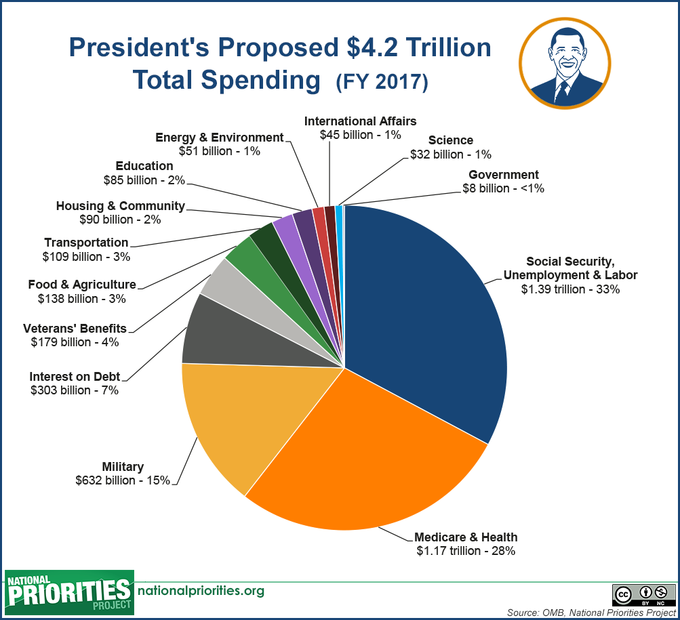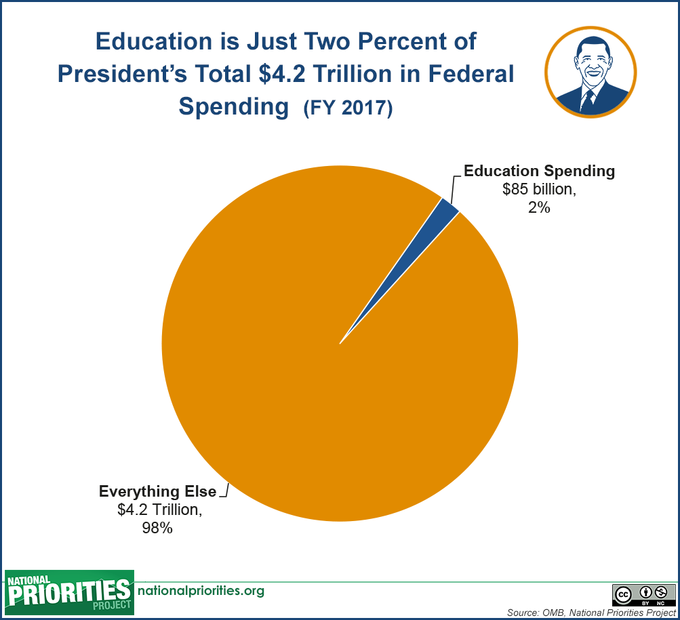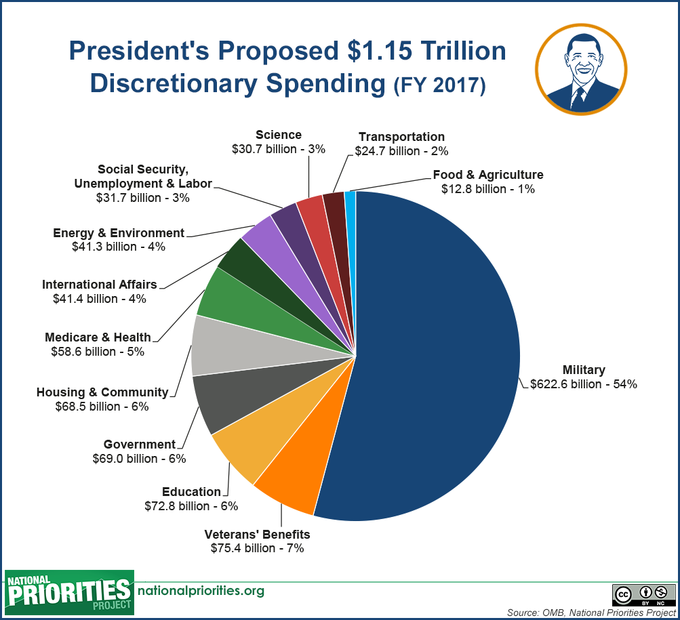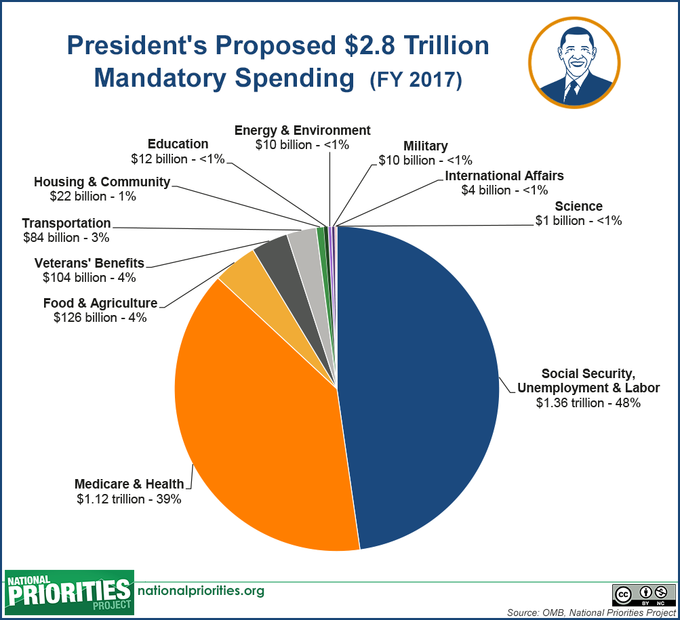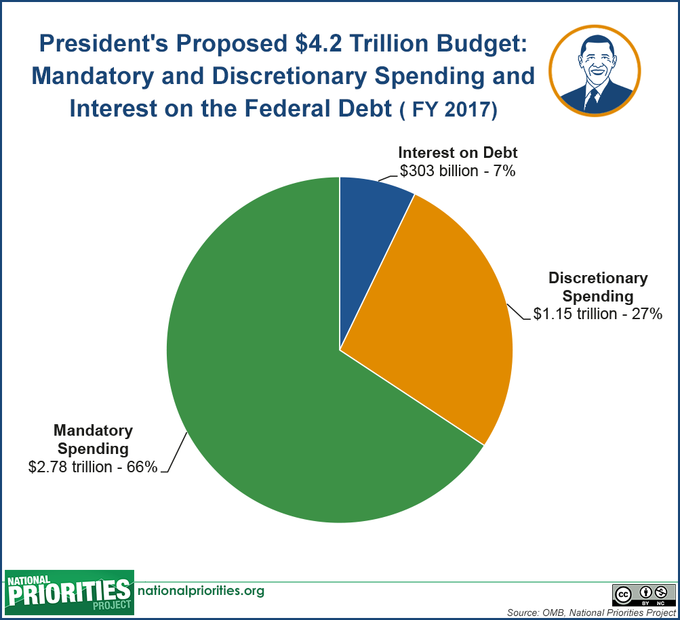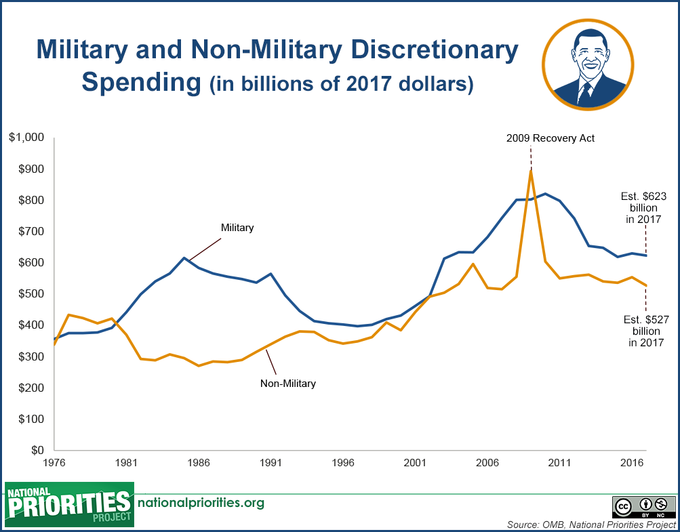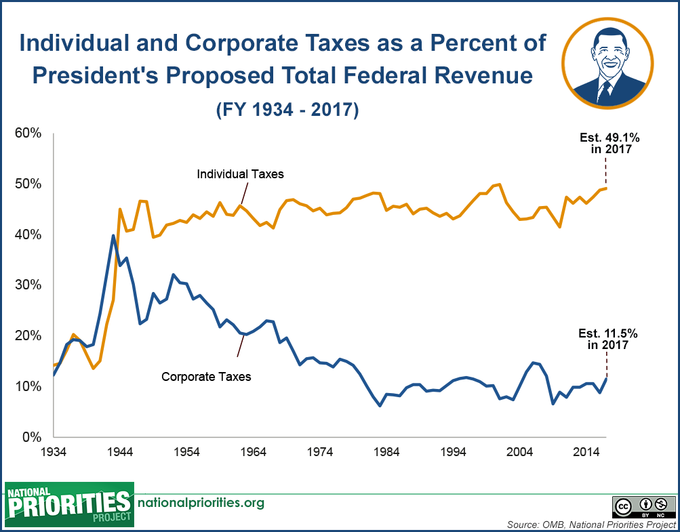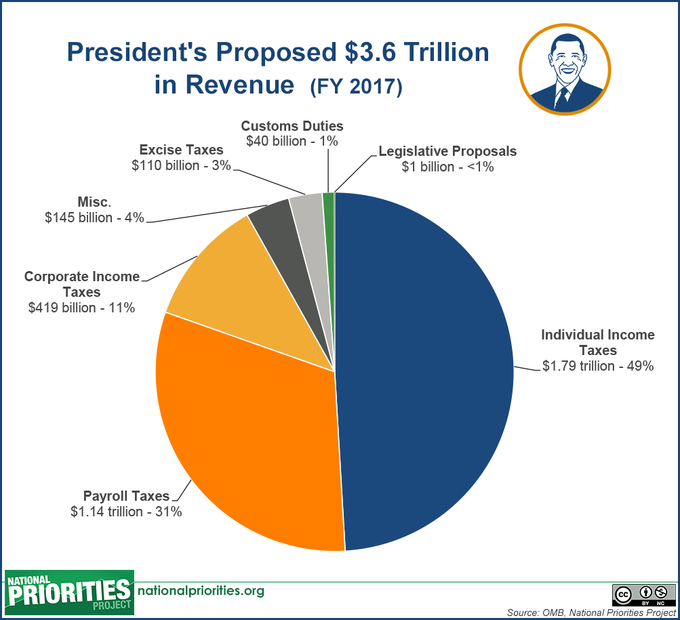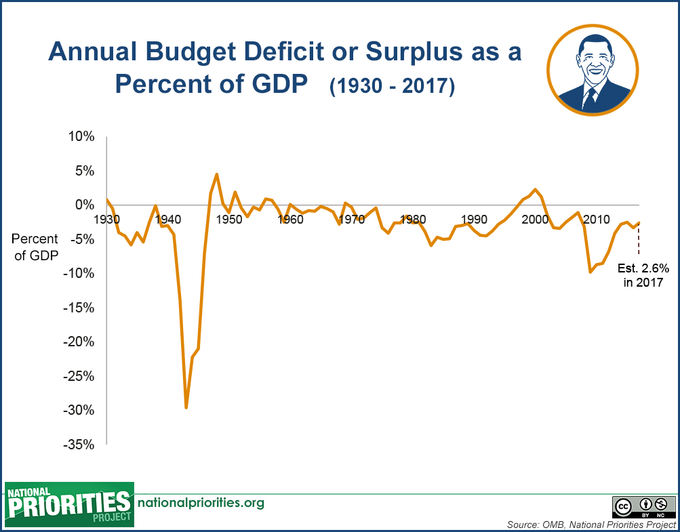The President's 2017 Budget Proposal in Pictures
Feb. 17, 2016 - Download PDF Version
The National Priorities Project breaks down President Obama’s $4.2 trillion budget proposal in a series of pictures.
By Jasmine Tucker
President Obama recently released his fiscal year 2017 budget proposal. And one thing we know about budgets is that they are all about priorities: What should we spend money on? How are we going to raise money for the programs we want to fund?
Though the budget ultimately enacted by Congress for fiscal year 2017 may look very different from the budget proposal released by the president, the president’s budget is important. It’s the president’s vision for the country in fiscal year 2017 and beyond, reflects input and spending requests from every federal agency, and is the benchmark by which all subsequent spending legislation will be measured.
These pictures tell the story of the priorities found in the president’s budget.
Total Spending
This chart shows how President Obama proposes allocating $4.2 trillion in total federal spending in fiscal year 2017, an increase of four percent over 2016 total spending. This includes every type of federal spending, from funding for discretionary programs like infrastructure improvements and job training to mandatory spending programs such as Social Security and Medicare, as well as interest payments on the federal debt. Social Security and labor, Medicare and health programs, and military spending will make up 76 percent of the total budget, leaving just 24 percent, or a little over $1 trillion of the $4.2 trillion total, to spend on all other federal programs.
Education Spending
Keeping with a trend that has spanned decades, the president proposes to set aside just 2 percent – or $85 billion – of the total federal budget for education spending, including K-12 and higher education initiatives.
Discretionary Spending
President Obama proposes to spend $1.15 trillion in discretionary spending in fiscal year 2017. Compared to 2016, discretionary spending would decrease in every category except veterans’ benefits and labor – including education, science, and international affairs. Discretionary spending is the portion of the federal budget that Congress determines annually in the appropriations process and accounts for 27 percent of all spending in the president’s proposed 2016 budget. It does not include earned benefits programs that people pay into like Social Security and Medicare. This chart shows how the president would allocate that spending:
Mandatory Spending
President Obama proposes to spend nearly $2.8 trillion in mandatory spending in fiscal year 2017, an increase of more than 5 percent over the 2016 enacted level. Mandatory spending includes earned-benefit programs that people pay into, such as Social Security and Medicare, and accounts for 66 percent of all spending in the president’s proposed 2017 budget. Lawmakers do not choose the exact amount of money spent on these programs, because they are dependent on the number of people who qualify for benefits, but rule changes can indirectly affect how much is spent. This chart shows how the president’s proposed rules would allocate that spending:
Mandatory and Discretionary Spending and Interest on Debt
This chart shows how mandatory spending and discretionary spending, discussed above, fit into the president’s overall budget along with interest on the federal debt. Under the president’s proposal, $1.15 trillion in discretionary spending would make up less than a third (27 percent) of all federal spending while 66 percent of spending, or $2.78 trillion, would be spent on mandatory spending programs. The remaining 7 percent of the budget, or $303 billion, would go towards interest on the federal debt.
Military, Non-Military Discretionary Spending
This chart shows how funding for military and non-military discretionary programs has changed over time. Under the president’s fiscal year 2017 discretionary budget, military spending would account for 54 percent, while spending on all non-military discretionary programs would account for 46 percent. Except for a brief spike when the American Recovery and Reinvestment Act (ARRA) infused federal dollars into the economy, Pentagon and related military spending has been higher than domestic discretionary spending for decades.
Individual and Corporate Income Taxes as a Percent of Total Federal Revenue over Time
This chart shows how tax revenue from individual income taxes and corporate income taxes has changed over time. Decades ago, corporate and individual income taxes accounted for an equal percentage of all federal revenue. But over time, those figures have changed. The president projects nearly half (49.1 percent) of all revenues will come from individuals and 11.5 percent from corporations in 2017. The president’s proposal would increase corporate tax revenues from $298 billion in 2016 to $419 billion in 2017. The remaining 40 percent of federal revenue will come primarily from payroll taxes from Social Security and Medicare, as well as other sources such as customs and excise taxes.
Total Tax Revenue
In 2017, the president proposes collecting $3.6 trillion in total tax revenue, with individual income taxes and payroll taxes – which fund Social Security and Medicare – together making up 80 percent of total revenue. The remaining 20 percent of revenues would come from corporate taxes and other, smaller sources of revenue. President Obama proposes tax revenue would cover 86 percent of total spending. The rest – 14 percent – will come from borrowing.
Annual Budget Deficit or Surplus as a Share of the U.S. Economy (GDP)
This chart shows the size of the federal budget deficit (or surplus) as a share of the overall U.S. economy (measured by Gross Domestic Product, or GDP) dating back to 1930. In President Obama’s fiscal year 2016 budget, the budget deficit amounts to $503 billion, about 2.6 percent of the economy. That’s on par with recent history: over the last 50 years, budget deficits have averaged 2.9 percent of the economy.
For additional analysis of the President’s fiscal year 2017 budget, see NPP’s President Obama Proposes 2017 Budget.


